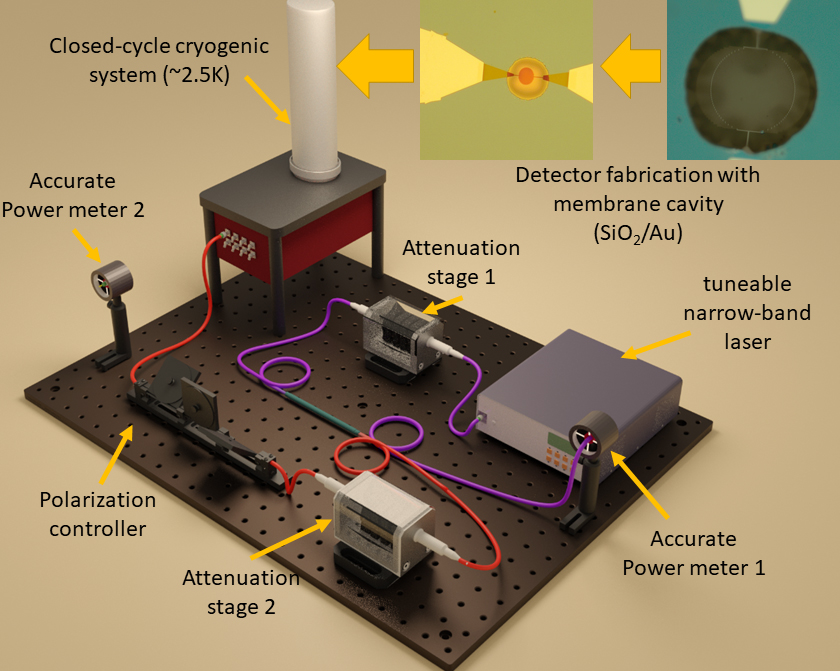Single-photon detection efficiency record broken
By using a novel membrane-based optical cavity and a gold reflector, researchers from the Optics Research Group (ImPhys), together with collaborators from the Royal Institute of Technology (KTH, Sweden) and Single Quantum B.V. (Delft) have achieved a detection efficiency of 99.5%, with a time resolution of sub-20 picoseconds.
Detecting light at its quantum limit, the single photon level, has enabled and greatly benefited quantum information sciences, fluorescence imaging, Lidar (radar with light) and many other applications. Since 2001, superconducting nanowire single photon detectors (SNSPDs) are the new standard for detecting single-photons. The past years, an international competition for so-called ‘near-unity efficiency SNSPDs’ has been created.
Now, by using a novel membrane-based optical cavity and a gold reflector, researchers from the Optics Research Group (ImPhys), together with collaborators from the Royal Institute of Technology (KTH, Sweden) and Single Quantum B.V. (Delft) have achieved a detection efficiency of 99.5%, with a time resolution of sub-20 picoseconds. In doing so, they broke the previous record of two different groups in the US and China, who achieved an efficiency of 98% last year.
The paper will be published in APL Photonics as Editor’s pick.The preprint version can be read here.
